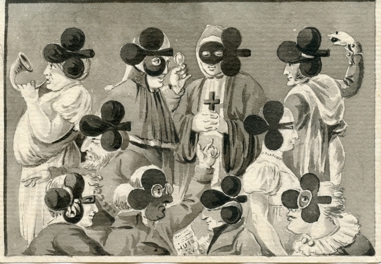 |
|
There's not much to tell about the provenance of this deck. It was offered in a Dutch auction house in a nondescript thin blue box, together with other stuff in one lot. I met the lady who had won the lot during a collectors bourse in Nieuwegein (NL), where she showed me a few cards. I immediately recognized the uniqueness of the deck, the cards were original, hand painted designs. Two weeks later she brought the complete deck to a collectors bourse in Utrecht and there the 52 small pieces of art ended up in my hands. The lady seller didn't have any further information, she couldn't even remember the name of the auction house. So origin, artist and country were unknown, nor how it got in this lot at an auction house. So the cards had to provide some answers.
When I first studied the
deck, I made the following observations:
- all the designs were done in watercolor.
- the high quality of the designs pointed towards a professional artist or a
very gifted amateur.
- the designs were done on two different types of (thin) paper.
- some of the designs looked familiar.
- some of the designs pointed towards a Dutch origin.
- on most of the cards, but not all, the designs had an outline.
- the cards were cut by hand, so there are tiny differences in height and
length, but overall they measure ± 66 by ± 98 mm.
ART & ARTIST
When I first took a magnifying glass to the cards to get a closer look, I was amazed by the fine details in most of the designs. They suggest the use of a brush with only few hairs, maybe even one, and occasionally a pen. Here below the 10 of clubs at about actual size and the detail that can be found at the bottom middle. It suggests a steady hand and sharp, young eyes, but probably the use of a magnifying glass too. Sadly the artist, be it a professional or a gifted amateur, will remain unknown. There's no name, signature or even initials to be found on any of the cards. But the quality of his artwork speaks for itself. He masters anatomy as well as materials, not only in color but also in black and white and the gray tones. And all that in this small format!
 |
|
On some cards the original pencil strokes for the design are still visible.
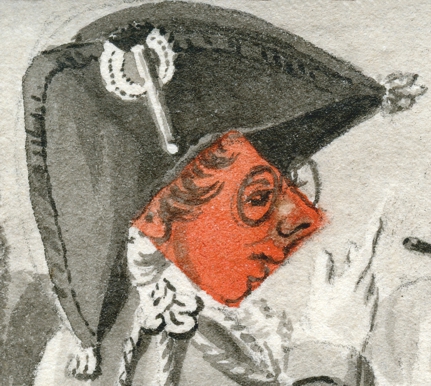
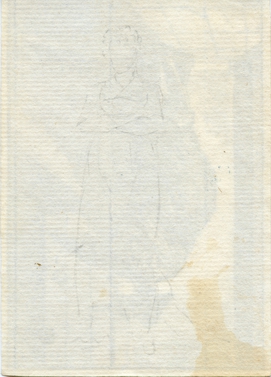 |
There are even two cards, of which the backs were used for a simple setup of a different design in pencil. |
|
|
Given the fine details, each card will have taken at least a few days to
design and finish, so it must have taken months, maybe even a year, before all
52 cards had been done. The cards here above also show the two different types of
paper that have been used.
THE PAPER
I have been in contact with a specialist in 19th century paper and he identified the used types of paper as vellum and laid paper. The vellum paper was used since the last quarter of the 18th century, laid paper was already used before that. But for this limited study Bas van Velzen of the UVA had asked for pictures of some cards on a light box and these showed some partial watermarks and countermarks on a few cards. These partial marks were not conclusive for Eric Hinterding, a specialist of the Rijksmuseum in Amsterdam, to name a maker, but he roughly dated the used paper as from the first decades of the 19th century.
|
|
|
Here a joint light box picture
of the front of the 3 of hearts and the back of the 2 of hearts. Besides
the catenaries (vertical lines) the partial watermark shows that the
cards were cut from the same sheet of laid paper. |
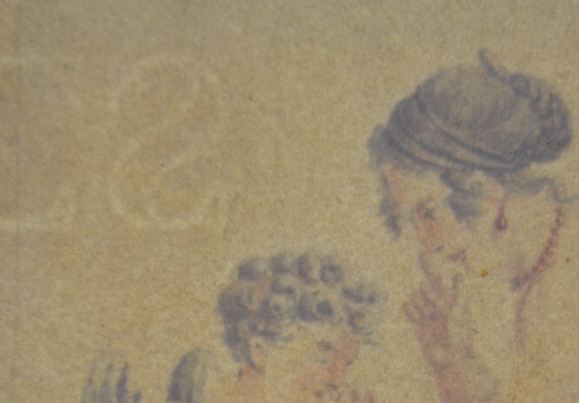
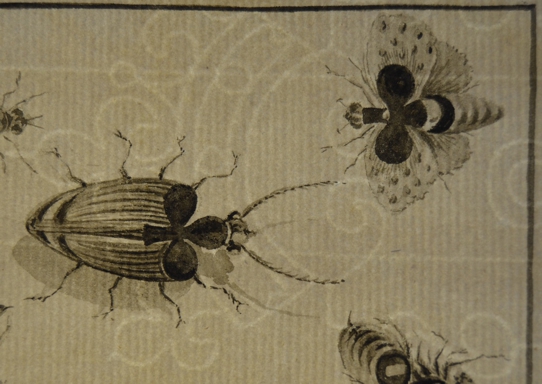
The detail on the 10 of clubs is already a very strong indication that these cards were made in Holland. "Huis" is a typical Dutch word, that is not found in any other language. But there are other indications too.........
-1-
-2- -3-
-4- -5-
-6- -7-
DXPOHOME